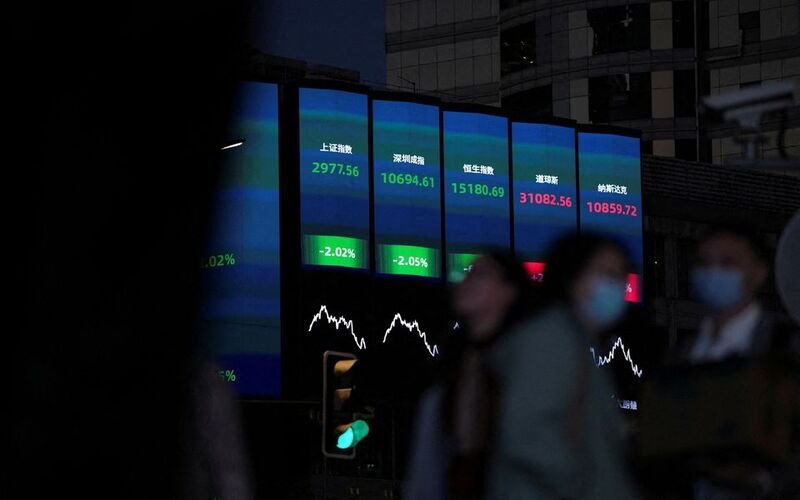while political uncertainty in Europe depressed risk appetites and put the euro on the defensive.
Chinese blue chips slipped 0.2% in May as retail sales grew 3.7%, but industrial output and fixed-asset investment lagged.
Other data showed that property values fell at their fastest rate in a decade in May, showing persistent housing market difficulties.
The People’s Bank of China (PBOC) kept its one-year interest rate unchanged, ending expectations that it would be cut in reaction to surprisingly worse bank lending figures.
According to Monday’s edition of the official Financial News of China, there was still opportunity for interest rate cuts, but both internal and external considerations hampered the decision.
This prompted cautious trading, with MSCI’s broadest index of Asia-Pacific shares outside Japan (.MIAPJ0000PUS) down 0.2%.
Japan’s Nikkei plummeted 1.9%, leaving investors waiting six weeks for details on the Bank of Japan’s next tightening measures.
EUROSTOXX 50 futures recovered 0.3% from last week’s steep losses, while FTSE futures increased 0.4%.
S&P 500 futures remained steady, while Nasdaq futures increased 0.1% following a streak of record finishes.
Goldman Sachs analysts raised their year-end forecast for the S&P 500 to 5,600, up from 5,200 and the current 5,431.
Friday’s data included a preliminary reading of the University of Michigan’s Consumer Sentiment Index, which was far lower than predicted.
The most important data point for the week in the United States will be retail sales for May on Tuesday, which are expected to increase by 0.4% after decreasing by 0.3% in April, while markets will be closed on Wednesday.
At least ten Federal Reserve policymakers are slated to speak this week, and they will almost certainly address the market’s expectations for two rate cuts this year.

































Comment Template